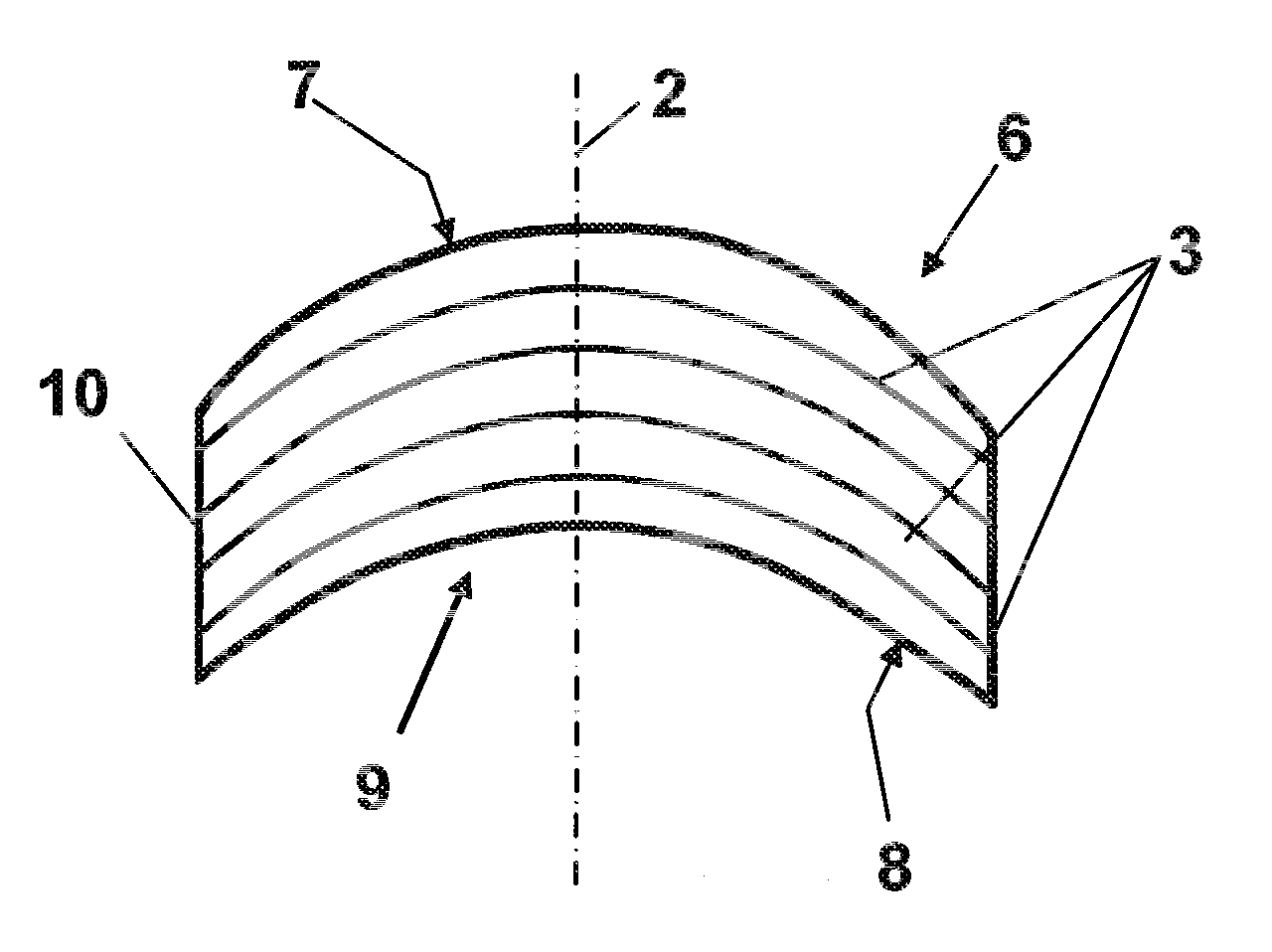Meniscus lens of synthetic quartz glass and method for the production thereof
a technology of synthetic quartz glass and meniscus, which is applied in the direction of glass making apparatus, glass shaping apparatus, instruments, etc., can solve the problems of reducing the accuracy of image reproduction and transmission, deteriorating imaging performance, and adding up over the total, so as to achieve the effect of reducing the possible adverse effect of optical or mechanical properties
- Summary
- Abstract
- Description
- Claims
- Application Information
AI Technical Summary
Benefits of technology
Problems solved by technology
Method used
Image
Examples
example 2
[0053]The quartz glass blank 1 is put into a graphite mold and weighted down with a ram. The graphite mold has a concavely curved bottom and the ram has a convexly curved bottom side shaped as a spherical segment. Both parts consist of porous graphite of high purity. For the deformation the whole mold is heated up with the quartz glass blank 1 contained therein to such an extent that the quartz glass is softened and flows out under the action of its own weight into the mold, thereby filling said mold. At the same time the ram resting thereon deforms the top side of the soft quartz glass mass so that a recess with a concave shape is formed.
[0054]The quartz glass blank 1 is first heated to 1350° C. and then heated with a ramp of 9° C. / min to 1700° C. and then with a ramp of 2° C. / min to a temperature of 1780° C. At this temperature the quartz glass mass is held for about 15 minutes. It is lowered in this process into the mold and the ram is simultaneously pressed in.
[0055]The inner fo...
PUM
| Property | Measurement | Unit |
|---|---|---|
| Angle | aaaaa | aaaaa |
| Angle | aaaaa | aaaaa |
| Angle | aaaaa | aaaaa |
Abstract
Description
Claims
Application Information
 Login to View More
Login to View More - R&D
- Intellectual Property
- Life Sciences
- Materials
- Tech Scout
- Unparalleled Data Quality
- Higher Quality Content
- 60% Fewer Hallucinations
Browse by: Latest US Patents, China's latest patents, Technical Efficacy Thesaurus, Application Domain, Technology Topic, Popular Technical Reports.
© 2025 PatSnap. All rights reserved.Legal|Privacy policy|Modern Slavery Act Transparency Statement|Sitemap|About US| Contact US: help@patsnap.com


